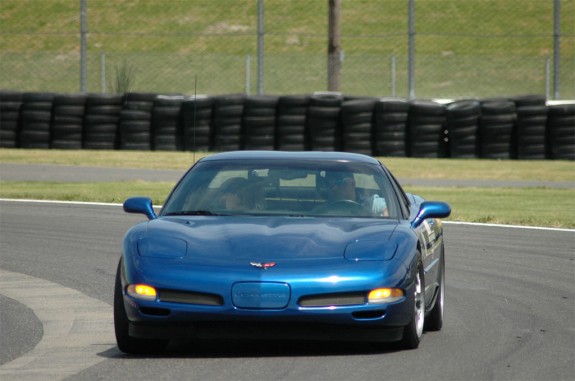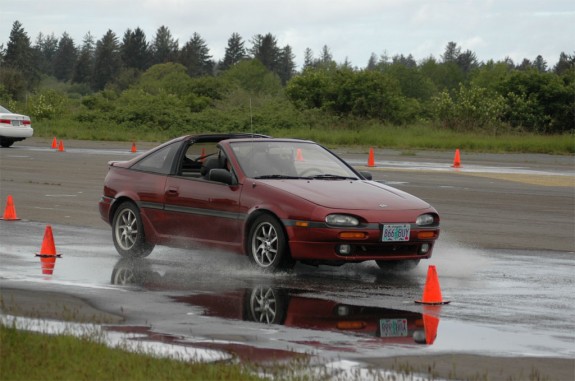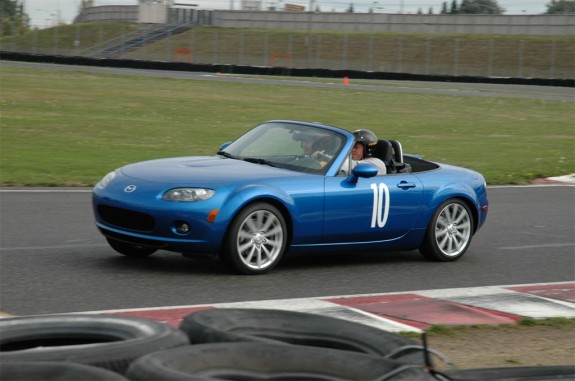How To Survive Your First Track Day
Track Day Racing – What you need to know
Every car enthusiast wants to drive on a race track – whether it’s a chance to hit the oval, cut a great light at the strip, or test your skills at a road course, the allure of the race track is obvious: there are no cops, no stoplights, and no minivans to pull out in front of you. It’s just you and the pavement. And maybe some walls.
Many clubs offer open track days, driver schools, and other events where you can get your car out on the race track. Some clubs require you to join up to participate, others are happy to take virtually anyone. If your club doesn’t do track days, just ask around and you’re sure to find at least one opportunity in your area.
Fair Warning: Driving on a Race Track is Dangerous
Before you sign up, there are three things you need to know:
- The first and most important thing to remember is that no matter how great your car drives and handles on the street, it’s likely to feel like a bowl of loose oatmeal on a race track. That’s just because everything happens faster, harder, and more intensely on the track. If you took a great race car on the street, you’d feel like you were driving a torture device. So don’t expect to set any records in your street machine, and don’t overcook the first corner.
- This one is harder to swallow. When you get to the track you’re going to be in the beginner group. Don’t argue about it – you are a beginner, and the quickest way to a crash is to get in over your head. There’s no shame in starting in the beginner group – everyone starts there. Check your ego at the track gate and take the instruction that is usually offered to beginners. After 20 years driving on track, I still feel fortunate when I can get an instructor to ride with me – I always learn something new.
- Finally, you need to know that you might do everything right and still crash. Your insurance absolutely will not cover a wreck that happens at a race track under any circumstances, so follow my simple rule: “If you can’t afford to drop it in a dumpster and hitch a ride home, don’t put in on a race track.”
That’s all the bad news. Here’s the good part – driving on a race track is like opening a whole new book in your automotive experience. It makes you a better driver on the street because you learn your car’s limits and you reduce your tendency to panic. You gain confidence in your abilities and lose the need to prove anything to anyone on the road. Plus, driving fast on a race track is just about the most fun you can have in a car with your clothes on!
In addition to driving fast on the race track, many track events will include an autocross or other driving skills training, such as a wet surface braking exercise. Be sure to take advantage of these skill-builders.
Preparing for Track Day
Here are some good guidelines to get you and your car ready for the big day:
- Once you’ve signed up for the event, you need to make sure that your car is as good as you can make it. That means you’ve got good tires underneath you, balanced and inflated to their proper pressure. Modern tires don’t benefit from low pressures, so use the manufacturer’s recommended pressures – at least to start with. You want the car to be predictable in its handling. At the same time, make sure your shocks, bushings, and steering are all ready for heavy duty use. Double check for leaks – no one wants to slide on your oil!
- Make sure your seat is comfortable and that your seat belts are in good shape. Remove all the junk from your trunk and anything in the cabin that might come loose and roll around. They’ll inspect your car when you get to the track and make you take that stuff out anyway, so get it done before you go.
- Get a good night’s sleep before the event. Don’t go out drinking. You need to be well-rested, relaxed, and at your best. Use common sense.
- Bring some good food and drinks to the track with you. You need to stay hydrated, especially in the summer months. Plus, you want to eat something every few hours, but eat lightly and keep the grease and yuck to a minimum. Your stomach will thank you while you’re on track.
- Finally, make sure you have a helmet. All track events require you to wear a real helmet – one that is Snell-rated. You can’t get away with a beanie on a race track. Most clubs will have some loaners, but if you plan to do this more than once, you’ll want to invest in your own bucket. Look at Bell and Pyrotect for good SA-rated helmets. SA stands for Sports Applications, and these helmets are designed differently from M-rated (motorcycle) helmets – SA helmets provide more extreme impact resistance and are made of fire-resistant materials. For your first helmet, a Pyrotect will be substantially less expensive than a comparable Bell, and almost as comfortable and light.
TIP: Get a full-face helmet. You’ll need one to drive a convertible, and while they cost more than an open-face helmet, you’ll be happy for the versatility. Plus, if your track day car doesn’t have a full racing harness, a full-face offers your nose and mouth some protection against “eating the steering wheel” in a crash. Yes. I mean that literally.
Surviving the Actual Track Day
Once you’re on track, you’ll probably get about 4 sessions of 20-30 minutes each throughout the day. That might not sound like much, but it’s all most people can handle. You’ll be tired by the end of the day. Use the downtime to rest, have a bite to eat and something to drink, and talk to others about what you’re learning. You’ll make friends and get the most out of the experience.
As a beginner, you are very likely to have an instructor. Your instructor, at a minimum, has a lot of track day experience, and most are SCCA or NASA club racers or have other competition experience. Listen carefully to what they tell you and leave your ego back in the paddock. You are there to learn and improve – and I guarantee you that your last laps will be slower than your first if you don’t listen, and faster if you do listen.
At the end of the day, don’t forget to thank your instructor and the staff workers who made the day possible.
For 20 years, my race car carried a little brass plaque that read “Racing is a sport. We do it for fun.” I’ll leave you to ponder the truth of that. Above all, don’t let your track day become stressful – if it ain’t fun, it ain’t worth doing.











